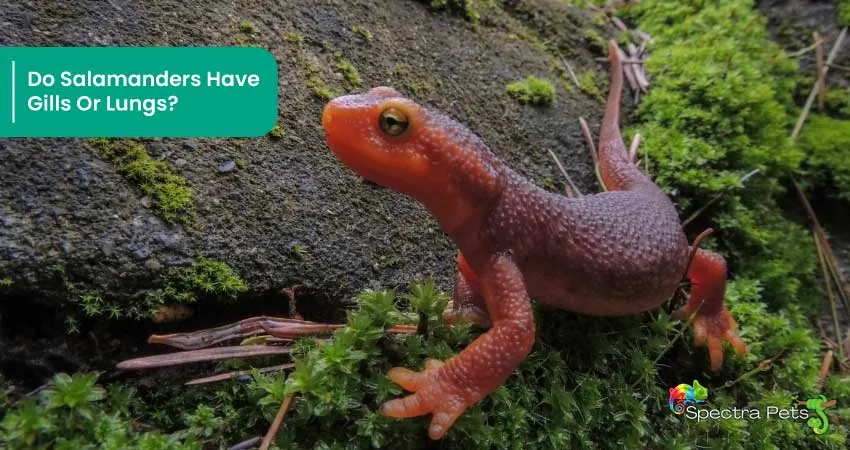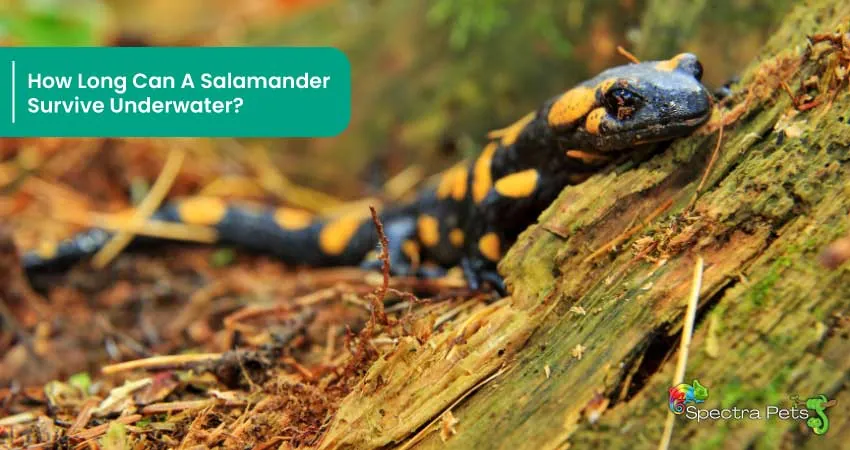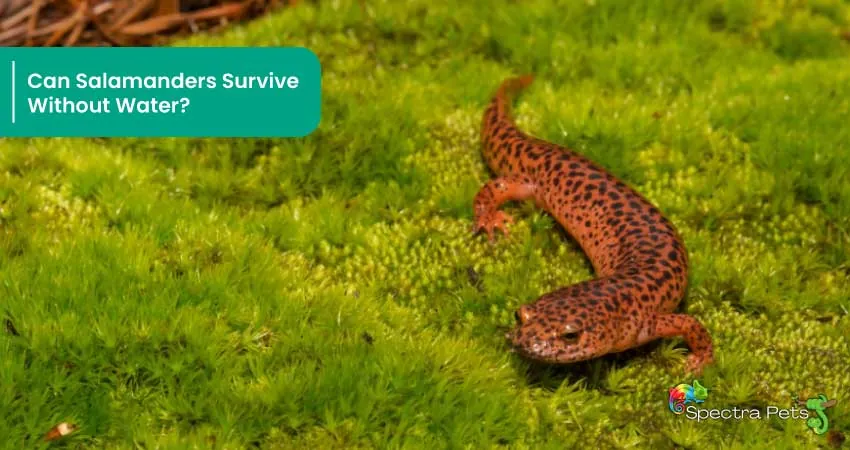Do you have a pet salamander? If so, have you ever wondered how your little amphibian breathes?
Basically, salamanders breathe both through their skin and lungs. Like other amphibians, salamanders have permeable skin that allows them to absorb oxygen directly from the water. This is especially important for aquatic species of salamanders, as most of their oxygen is obtained through their skin.
At the same time, these amphibians also have lungs, just like mammals, which they also use to breathe in air. This allows them to survive on land as well as in the water.
Keep reading to uncover the science behind salamanders’ breathing abilities and learn how these incredible creatures inhale air.
Do Salamanders Have Gills Or Lungs?

Salamanders typically have gills when they are young, but they can develop lungs as they grow older. Some species of salamanders never really develop any lungs and continue to breathe exclusively through their gills throughout their lives. This is known as neoteny, and it is a common trait among amphibians. These amphibians are capable of respiring through their skin as well, which allows them to extract oxygen from the water and air.
So, how do salamanders actually breathe? You’ll get a better understanding of this in the next section.
How Do Salamanders Actually Breathe?

Like I said before, salamanders breathe through their skin and lungs. This unique characteristic sets them apart from many other animals and has allowed them to thrive in a variety of environments.
These creatures belong to the class of animals known as amphibians, which are characterized by their ability to live on land, as well as in the water. Like other amphibians, salamanders have moist, permeable skin that allows them to exchange gases with their environment.
This means that they can absorb oxygen from the air or water through their skin and release carbon dioxide in the same way. This breathing process is also known as cutaneous respiration.
In addition to this, these amphibians also have lungs. These lungs are similar to those of other vertebrates, such as mammals and birds, and are used to exchange gases with the air.
One of the key advantages of being able to breathe through their skin is that it allows these creatures to remain underwater for extended periods of time without having to surface for air. This is especially useful for species that live in fast-flowing streams or rivers, where they can use their skin to absorb oxygen from the water as they are carried along by the current.
Another advantage of skin-based breathing is that it allows these amphibians to extract oxygen from the air or water, even in low-oxygen environments. This is particularly useful for species that live in environments with limited access to oxygen, such as swamps or wetlands.
In addition to their skin and lungs, salamanders also have a number of other adaptations that help them breathe efficiently. For example, many species have flattened bodies and wide, fringed feet that allow them to move easily through water and increase their surface area for gas exchange.
Overall, the ability to breathe through their skin as well as through their lungs gives these unique amphibians a unique advantage in their aquatic environments and allows them to thrive in a variety of conditions.
How Long Can A Salamander Survive Underwater?

Since you know that salamanders can also breathe underwater, you may now be curious, how long do they actually manage to stay alive completely submerged?
The amount of time a salamander can survive underwater varies depending on the species and the conditions of the water. Some species of salamanders, such as the axolotl, can remain submerged for long periods of time without needing to surface for air. Other species may need to surface more frequently to breathe.
In general, these creatures have a high tolerance for underwater environments and can remain submerged for extended periods of time. However, they will eventually drown if they are unable to obtain oxygen.
Can Salamanders Survive Without Water?

Most species of salamanders are aquatic, which means they require water to survive. They typically live in damp environments and rely on their gills or lungs to extract oxygen from the water. However, some species of salamanders, such as the lungless salamander, can live on land for extended periods of time.
These salamanders have evolved to extract oxygen through their skin, which allows them to survive in damp environments without access to water. However, even these salamanders still require some moisture to survive and will not thrive in completely dry environments.
Frequently Asked Questions (FAQs)
Do Salamanders Drink Water?
Salamanders typically do not drink water in the same way that other animals do. Instead, they absorb water and other nutrients through their skin. This allows them to hydrate and obtain the nutrients they need without having to actively seek out sources of water.
Some species of salamanders, such as the axolotl, can also filter water through their gills, which helps them extract oxygen and other substances from the water. However, salamanders still require access to water in order to survive and thrive.
Can Salamanders Breathe Fire?
Despite being pictured as fire breathers in many fictional stories, real life salamanders do not have the ability to breathe fire. The ability to breathe fire is a characteristic of dragons, which are mythical creatures and do not exist in the real world.
Salamanders are real animals, and they do not possess the ability to breathe fire or any other type of flame. Instead, they rely on their gills or lungs to extract oxygen from the water or air, depending on the species and its environment.
Are Salamanders Born With Gills?
Most species of salamanders are born with gills, which allow them to extract oxygen from the water and survive in their aquatic environments. As they grow and develop, some salamanders will develop lungs and be able to extract oxygen from the air as well. This process, known as metamorphosis, is common among amphibians and allows salamanders to adapt to changing environments.
However, some species of salamanders, known as neotenic salamanders, retain their gills throughout their lives and never really develop their lungs. These salamanders are able to survive and reproduce in water without undergoing metamorphosis.
Wrapping Up
Salamanders are amazing creatures with a unique dual respiratory system that ensures their continued survival even in the most challenging environments. From their lungs to the ability to absorb oxygen through their skin and mouth, salamanders have evolved over millions of years to become masters at gathering oxygen from all around them so they can thrive.
Above all, by understanding how these amphibians breathe, we can gain greater insight into their anatomy, behavior, and overall adaptability in the wild.

